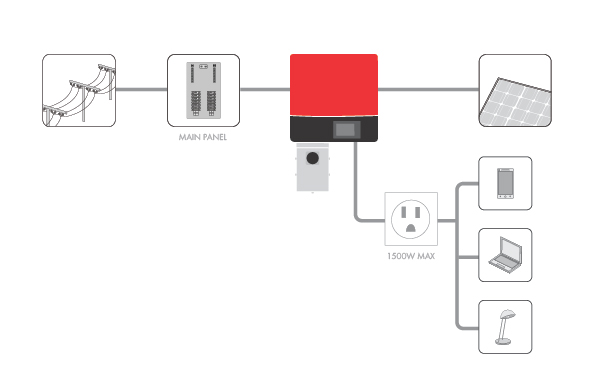Part 1: How does the Sunny Boy TL-US stack up against module-level systems?

Added value and opportunity power
All residential inverters perform a basic function: They convert direct current into alternating current for household use. However, not all of these devices are created equal. This blog series will explore the myths and misconceptions of some of the industry’s other module-level power electronics versus with the SMA Sunny Boy TL-US with Secure Power Supply, the solar industry’s most advanced residential inverter solution.
While there is a need and a great place for using module-level equipment, many within our industry have overstated this need to the detriment of today’s advanced string inverters. But before we get into all that, let’s discuss what the “with Secure Power Supply” is all about and how it is bringing added value to both the homeowner and solar professional.
Unique benefit to homeowners
One of many innovative features of the Sunny Boy TL-US inverter is its popular Secure Power Supply, a groundbreaking technology only available from SMA. With all grid-tied inverters, when the grid goes down, so does the solar-powered home.
However, Secure Power Supply makes it possible for the Sunny Boy TL-US to provide up to 1,500 watts of daytime power to a dedicated outlet during grid outages, providing homeowners with access to power that no other inverter solution can offer. This allows homeowners to power most small and medium electronics such as a laptop, cell phone, fans and much more, without the need of additional, costly batteries. That makes the Sunny Boy TL-US with Secure Power Supply an affordable option with a real added value that no other residential PV solution has.
Business opportunities for the solar professional
The Sunny Boy TL-US with Secure Power Supply also helps solar professionals generate more business and revenue. It presents upsell opportunities for both new installations and existing Sunny Boy TL-US systems while also promoting customer relationships and opening the door for operations and maintenance services.
But that’s not all. Once customers get a taste of opportunity power, they often want to upgrade to backup power. That paves the way for Sunny Island retrofits, which are already in demand on the East and Gulf coasts, with no additional prospecting or cost to capture the sale.
The next parts
Stay tuned for the next installments of How does the Sunny Boy TL-US stack up against module-level systems?, which delve into the energy production, shade mitigation, cost considerations and operations and maintenance of residential systems with module-level power electronics versus with the Sunny Boy TL-US with Secure Power Supply.




I am interested in the SMA TL series of grid tied inverters. Not only for the experience of SMA over the years but the idea of having power during the day during a power outage is the main reason I want to know more. Is there another box I need to purchase to wire into the main inverter to provide the Secure Power Supply? I am specifically wanting to use the SMA TL3.0 power inverer. Will it provide the SPS? Is the SMA TL 5.0 the only inverter with the SPS? Thanks
There is no question that the Secure Power Supply is a great feature and that it helps to sell the SMA TL series inverter. But, when shading is an issue, I do not hesitate to recommend micro-inverters because they do maximize energy production in those situations. That’s an advantage that is available EVERY DAY, not just when grid power is down. Both string inverters and micro-inverters have their place and to say that one is better than the other is overly simplifying. It really does depend on solar access.